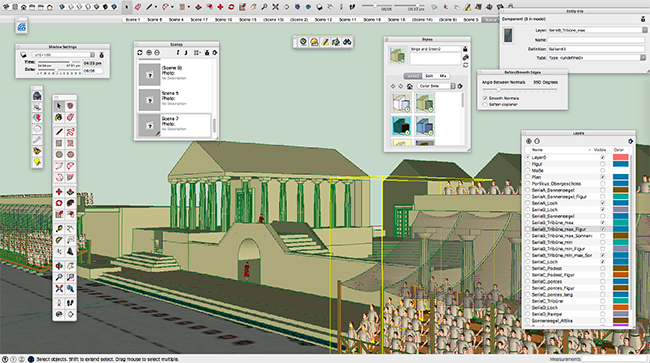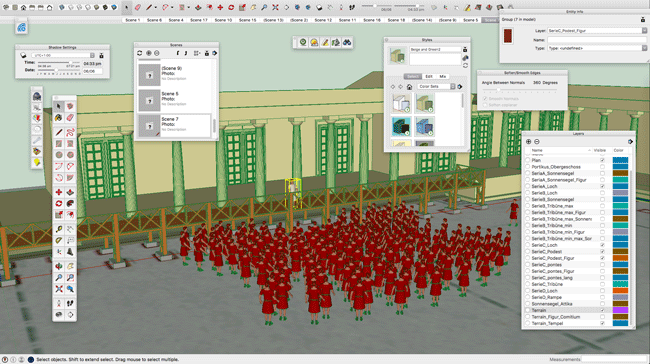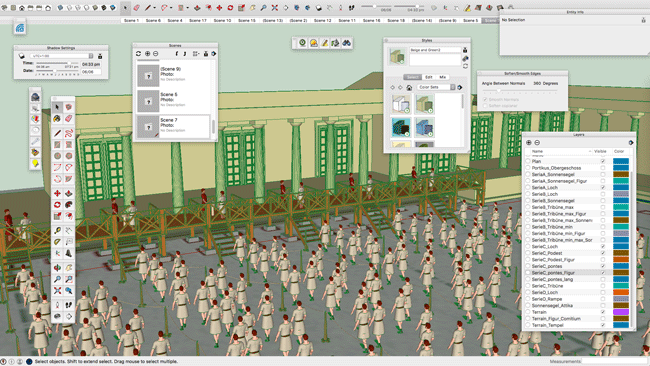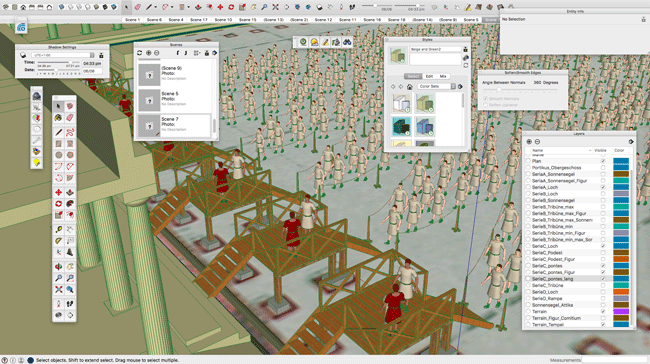This Ph.D. project examined the usage of public space in Italic cities and focuses on the pragmatic dimension of architecture. By doing that certain structures of pits found within italic fora are being used to analyse architectural consequences for various perceptions like acoustics, climate control or movement behavior.
Research
Considerations of possible architectural modifications and consequences are not limited to permanent architectural structures, but include also ephemeral architecture. Although they are no longer extant, pits provide clues as to their possible reconstruction. This research project intended therefore not to present a conclusive solution, but rather to stimulate a new understanding of the pragmatic dimension of architecture and its consequences for sensual perception.
Methodological approach
The focus on pits in italic fora provides a far-reaching view on the usage of public space. With the help of digital reconstructed architecture according to the pits a pragmatic use is evident. Pits could be used for anchoring construction like stands (see the reconstruction for the forum of Paestum), speakers platform, or even for poles with awning attached to it. Consideration of an acoustic perception can be traced in some cases, like in Alba Fucens and Cosa. Unlike in Paestum where acoustics were not linked with the construction of the stands, however visuality and movement was more important.
results
Seeing the topic within a bigger scale – chronologically and geographically – there is very good reason to take the similarities as suitable comparison regarding the technological approach developed and maintained in antiquity, and constant human behavior searching for a pragmatic use of temporal architecture. The fact that the sizes of the opening of pits diminish over time consequently leads to the assumption that the decreasing opening is due to a better understanding of architectural statics of temporal features – not done by verifiable calculations but by experience.
This experience lead to another conclusion: pits are set up within an efficient structure and within distances less than four meters. This figure corresponds with modern calculations of the carrying capacity of wooden beams with certain dimensions; after four meter the carrying capacity declines enormously.
Within the working process on this dissertation, papers have been given at several international conferences and relevant issues have been discussed intensively with scholars of the Deutsches Archäologisches Institut, especially of the architectural department, as well as with scholars from Great Britain and the United States.
Additionally, Lukas Bossert also was invited as speaker for the 207th anniversary of the “Gesetzlose Gesellschaft zu Berlin”, which – as one of the oldest debate clubs in Berlin – enjoys a good reputation.
Further results
In the process of writing the dissertation in LaTeX, Lukas Bossert noticed the lack of a bibliographical and citation style according to the guidelines provided by the Deutsches Archäologisches Institut which are compulsory to go with in the thesis. Together with Johannes Friedl (Munich) he has been able to compensate that which led to the open access biblatex-style called archaeologie available for everyone from the Comprehensive-TeX-Archive-Network (CTAN) under https://www.ctan.org/pkg/archaeologie.
The material discussed in this dissertation is now organized systematically in a catalogue. Before, it was insufficiently displayed since the interplay between text and catalogue lacked proper dynamic interrelation. Together with Uwe Ziegenhagen (Cologne) and Herbert Voß (Berlin) different methods were found eliminating the code/textual insufficiency and published a paper in the journal concerning such TeX-related issues (Die TeXnische Komödie).
This Ph.D. thesis was written within the program Landscape Archaeology and Architecture (LAA) of the Berlin Graduate School of Ancient Studies (BerGSAS) and successfully completed in 2018.




